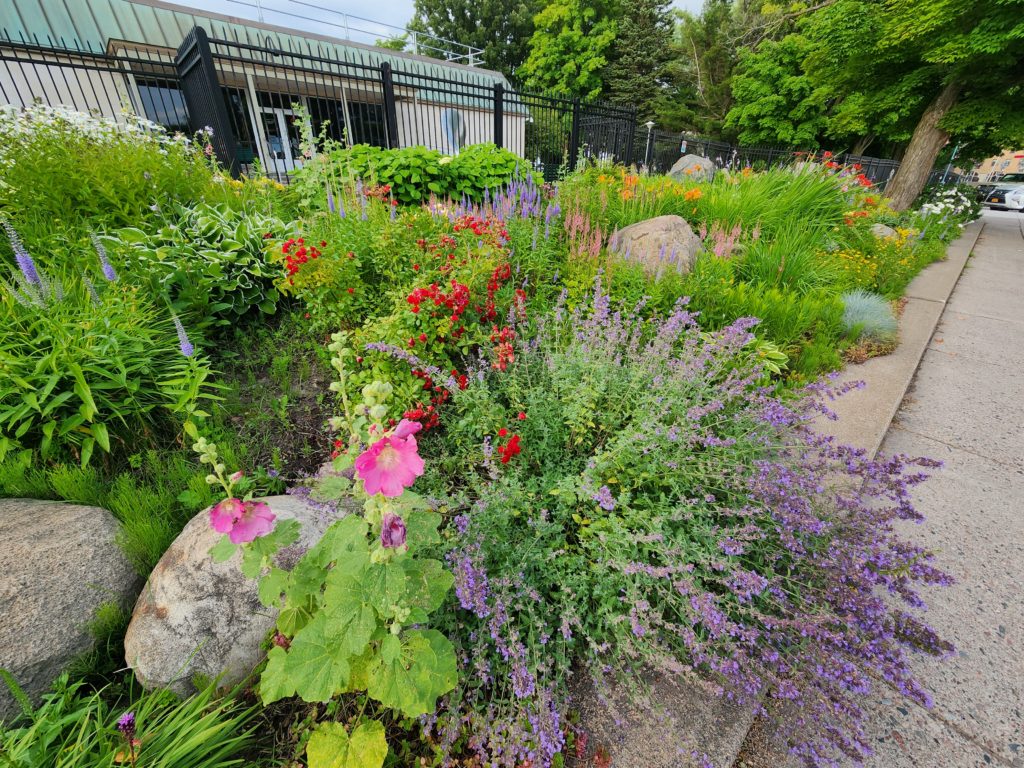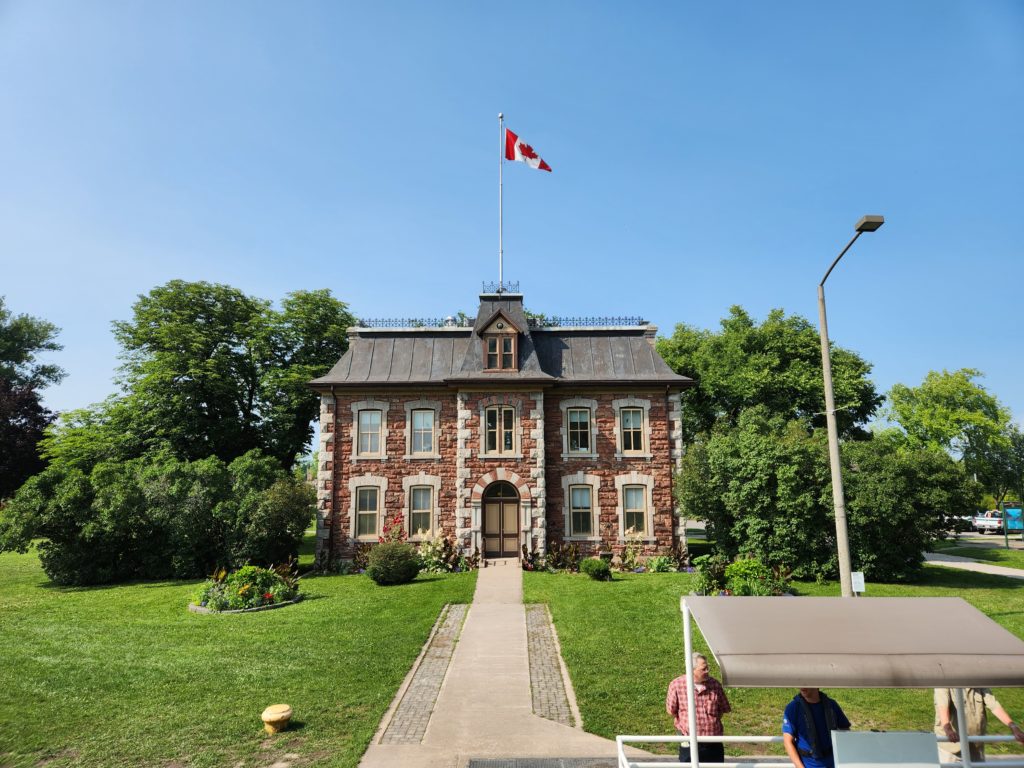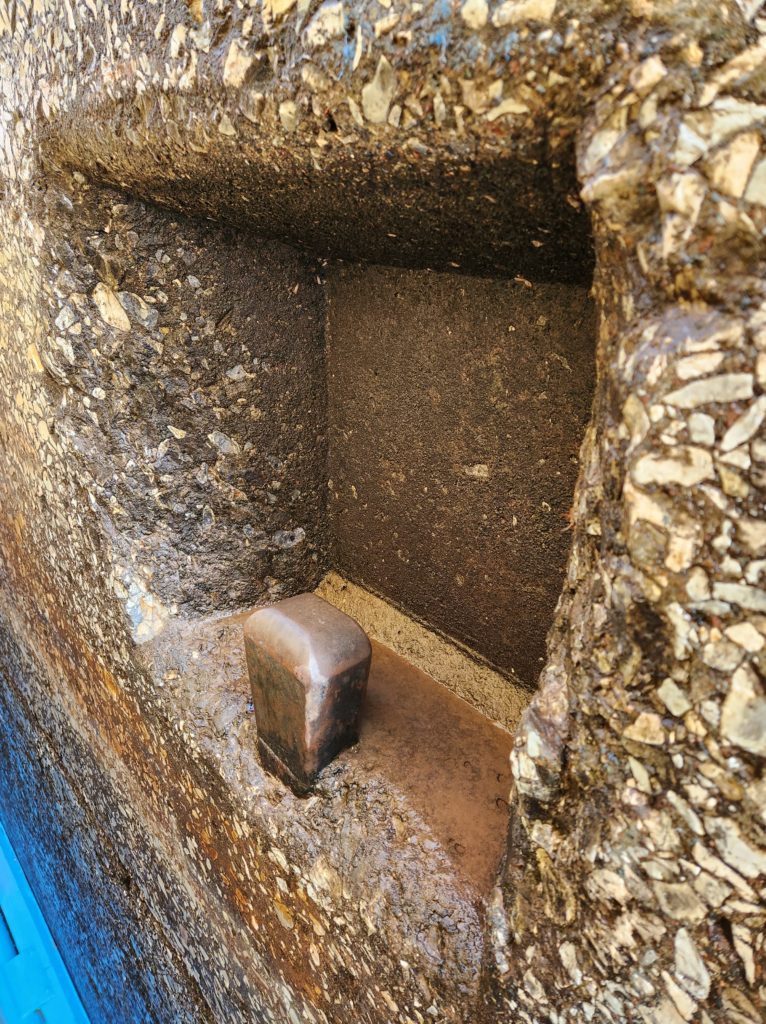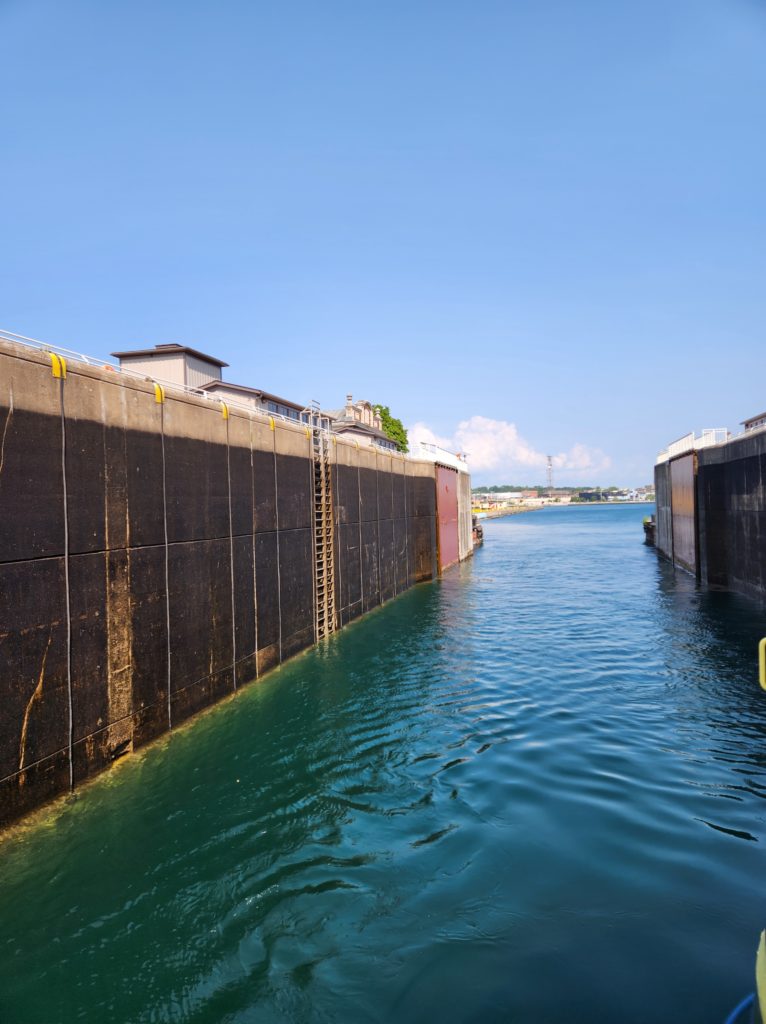The Soo Locks in Michigan are a marvel of engineering. Just watching huge ships go through the locks is fascinating, but taking a boat tour through them ourselves was a treat. We got to see the process of how ships enter, are tied off, and all of the little, but very important details that go into moving ships from one Great Lake to another. It was also fun to see the city, and the Canadian border, from a different perspective.
What is a lock you ask?
Sometimes there is a place along a river where the water level on one end is much higher than on the other end. This is often caused by a dam being built along the river, but it can also be caused naturally as well. In the case of the Soo Locks, a 1000-foot-thick layer of bedrock causes a 21-foot drop where Lake Superior meets the St. Marys River. Because of this difference in water level, boats can’t pass through.

In a very small, very simplified nutshell: A lock system is like an elevator that raises or lowers ships (depending on which direction they are going) and allows them to move on to the other side of the river.
Before the locks were built in this area, people would have to unload one ship, have the contents moved on land to the other side of the blockage, and then load them onto another waiting ship. As you can imagine, this got really old really quick and they built the first lock in 1797. Since then, there have been several locks built and destroyed or lost. The four locks that are present now are the only way that vessels can get from Lake Superior to Lake Huron and seven to ten thousand of them make the trip each year.
(If you’re interested in reading the full history of the Soo Locks, this is the best post I’ve found.)
To watch the Soo Locks in action from land, you can go to the Soo Locks Park – 329 W Portage Avenue.
We actually found this place by accident while we were wandering around town the first night we were there. As luck would have it, there was a huge freighter coming through the locks right when we got there.

You can take your chances like we did, or you can call (906) 202-1333 to find out when ships will be passing through the locks so that you’ll be sure to see one.
A quick note, just to let you know ahead of time: It can take a while to move the bigger ships into the lock, get them situated, and begin to move them out. So be prepared to spend at least an hour or so if you want to watch the process from start to finish.
This park has a lot of historical memorabilia and a Visitor’s Center where you can learn more about the history of the locks. It’s also just a nice place to walk and enjoy a warm, sunny day. Be sure to check out the beautiful flower garden in front of the park’s fence too. When we were there in July, it was filled with all different colors and types of blooms.


The absolute best way to experience the Soo Locks though is by taking a cruise with the Famous Soo Locks Boat Tours -515 E Portage Ave, Sault Ste. Marie, MI.

If you have the time and ability, I highly recommend that you take a boat tour of the Soo Locks. Not only do you get a closer view of the locks, you actually get to go through them twice (once going up the river and once going down).
You get to feel the water moving up or down, and see all of the details that go into moving vessels through these fascinating structures. Plus, you’ll learn all about the history of the locks and the surrounding area – including several beautiful bridges (more on those below), the Canadian shoreline, and the Edison Sault Power Plant that is right near the locks (which was interesting in and of itself).


One of the things that I found really interesting is that the locks close down between mid-January and mid-March each year. This is due to the extreme weather that this area gets around this time of the year, but also so they can do maintenance on the locks. To do so, they completely drain them and workers move in to inspect, clean, and fix anything that needs it. When you see all of the water that those locks contain, it’s amazing to think about what they would look like completely empty.
What can you expect when going through the Soo Locks on a boat tour?
On our tour, there was a barge coming through the American side so we went through the Canadian lock first and then back through one of the American locks.
When a vessel enters the lock, depending on the size, they are lined up with certain points along the way where they can tie off. Because any boat with a motor (and permission from the lock master) can go through here, including personal boats, there are several places to tie off. We’re talking boats from 20-feet long all the way up to 1000-feet long.


Tying them off helps to keep the boats from moving around and possibly getting damaged. It also keeps the people on board safer. When the water is flowing in or out of the lock, it doesn’t seem like it’s moving that fast, but 22 million gallons flowing through is enough to move the boat a little. More so if it’s a smaller vessel.
After tying off, the huge gates behind you close and you are in a long rectangular space.

There was a little family of ducks in the lock that we went through the first time and I was worried that they would get separated (or worse), but the lady on the boat said that they have been there for a few weeks and the gate operators actually watch out for them. She said that they did get separated one time and they actually opened the gate back up to let the last little one out. They hang out around the lock doors because of the grass and bugs that accumulate there.

Once the doors are closed the water begins to fill (or drain, depending on which way you’re headed). When we went through, it took about 15 minutes to get to the level of the lake on the other side. And really, even though the thought of what is happening is amazing…this part is fairly uneventful. I spent most of this time watching the ducks, and a little frog that was swimming around.
When the water gets to the level it needs to be at, they open the gate in front of you, the crew pulls the ties in, and you proceed on.
Other than the locks themselves, I really enjoyed seeing all of the different bridges that we went under and past.
This particular bridge is the International Bridge between the U.S. and Canada.

The black steel structure is part of the International Railroad Bridge and was built in the mid to late 1890s. It has a swivel in the middle. To “swing” into place it turns 90 degrees on that swivel to where half of it is over the water and half of it is over the land. The half over the water connects to allow trains to pass over this part of the river. The half over the land keeps the structure balanced. Once the train has crossed, it “swings” back to where it’s sitting in this picture to allow boats to pass through.
If you’re a bit of a train nerd like I am, you’ll find this interesting as well: “within this bridge [the International Railroad Bridge] each of the three most common moveable bridge types is represented.” So, I didn’t really know until we went to Cleveland, OH just how many different types of moving bridges there are. I thought that the only type of bridge to allow both ships and cars to pass was a draw bridge. As it turns out, there are several different types of “spans” that move: swing spans (like the one above), vertical lift spans (like the one below), Bascule spans (like the one in front of the International Bridge above), and several others.

This blog post I found on historicbridges.org has a really well written history of the International Railroad Bridge, including pictures of all of the different pieces and parts that make up this beautiful track.
Before or after your tour, if you’re looking for a good place to eat, I recommend The Wicked Sister – 716 Ashmun St.
The food is delicious and the staff was extremely friendly when we were there. And while you’re trying to decide what to get, be sure to read the different descriptions on the menu. They are quite funny. Like the Construction Dip that I got (that was delicious!) – “The Wicked Sister’s nod to the 2015’s Ashmun St. Construction Project (which is still ongoing). Our dip is creamy, cheesy, garlicky, bacon-y & gooey. Served with house cooked chips & soft pretzel bites (which I usually don’t like, but these were excellent). Unlike road construction, you’ll actually be sad when this dip is gone!” =)
If you’re interested in seeing what all we did in Sault Saint Marie, I have another post about our entire trip to Michigan’s Upper Peninsula. The Pictured Rocks National Lakeshore is about 2 hours away from here, and if you have the time, I would also recommend going to see the awe-inspiring views there.
